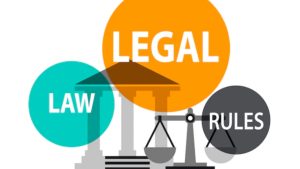In a civil democratic society, both interest groups and pressure organizations seek to affect public policy via advocacy. There are, however, distinctions between the two categories. Businesses, labor unions, professional associations, environmental organisations, and so on are all examples of interest groups.
These organizations work to further their members’ interests through lobbying lawmakers, disseminating data, and influencing public opinion. Interest groups may seek to influence politics from inside, prioritizing long-term policy improvements above short-term gains.
But pressure groups are those who seek to bring about rapid change by activities like rallies, boycotts, and strikes. They may engage in disruptive activities or civil disobedience to force officials to reconsider their stances or policies.
Recommended: Low Self-esteem: Causes, Effects & Solutions
Differences Between Interest Groups And Pressure Groups
1. Level Of Influence: Pressure and interest groups vary in their political impact. Interest organizations lobby and advocate for public policy, whereas pressure groups concentrate on particular policy changes and utilize more confrontational methods including rallies, demonstrations, and strikes.

Interest groups may influence policy via official channels. They utilize lobbying, campaign donations, and grassroots mobilization to influence officials. Interest groups may use research and analysis to propose policies and influence public discourse.
Pressure organizations may use more aggressive methods to attain their policy aims. Demonstrations, boycotts, and civil disobedience may raise awareness and push decision-makers. Media campaigns and social media may organize public opinion for pressure organizations.
Pressure organizations may influence public policy by highlighting concerns and mobilizing public support. Interest groups may have greater resources and membership.
Pressure groups are successful when public concern is high and officials are unresponsive. Interest and pressure groups may influence public policy in various ways and on different problems.
2. Nature And Purpose: Interest groups promote and advocate for a certain group of people, whereas pressure groups lobby government and other decision-makers to seek policy changes that benefit its members or advance their cause.

Interest groups including industrial associations, professional organizations, and labor unions represent a certain group. These organizations lobby for industry-friendly laws, regulations, and funding. Interest organizations may influence public opinion and elections by promoting their members’ interests. Pressure organizations, on the other hand, focus on one social or political issue like civil rights, environmental preservation, or gun control.
These groups may represent a larger coalition of persons or organizations with a shared interest and aim to influence public policy on a particular subject. push groups may utilize rallies, boycotts, and civil disobedience to raise awareness and push decision-makers.
Interest groups represent a certain group, whereas pressure organizations advocate for policy changes. Interest groups have long-term aims, whereas Pressure Groups Have Short-term Ones.
See Also: Best Websites To Learn Programming For Free 2023
3. Aims: Pressure groups have short-term aims, whereas interest groups have long-term goals that may not be realistic. Interest organizations promote and advocate for a certain group.

They lobby for legislation, rules, and money that will benefit their members in the long run. Interest organizations may influence public opinion and elections by promoting their members’ interests.
Pressure organizations focus on social or political issues like civil rights, environmental conservation, or gun control. They aim to influence public policy on a particular topic by representing a larger coalition of persons or organizations with a shared interest.
Pressure organizations may aim to block a policy change, pass legislation, or win a court battle. Both organizations can influence public policy, but their methods vary.
Interest groups may utilize lobbying and campaign donations to develop ties with legislators. push groups may utilize rallies, boycotts, and civil disobedience to raise awareness and push decision-makers.
4. Financing: Pressure groups may depend on individual contributions or fundraising, while interest groups may obtain financing from their members or supporting corporations and organizations.

Interest organizations may have more funding and personnel to lobby and advocate. Interest groups may study, engage specialists, and start media campaigns to support their policy aims, making them more prominent in politics.
Pressure organizations may depend more on grassroots initiatives and individual funding. They may utilize social media and other internet venues to rally supporters and raise funds.
5. Membership: Pressure groups and interest groups can range in membership size. Interest groups, such industrial associations, professional organizations, and labor unions, have more members than pressure groups since they represent a specialized group. Interest groups may have millions of members.

They may provide networking, professional development, and product or service discounts to dues-paying members. Pressure organizations, which generally focus on social or political issues like civil rights, environmental conservation, or gun control, may have fewer members.
They may represent a looser coalition of people or groups with a shared interest. Pressure groups may use social media and other online venues to rally support rather than official membership organizations. They may also use volunteers and activists for their initiatives.
See Also: Importance of Law in the Society
6. Types Of Issues Engaged: Pressure and interest groups concentrate on different concerns. Interest groups concentrate on tax policies, labor legislation, and corporate restrictions that influence their members or industry.
The American Medical Association, the National Association of Realtors, or environmental preservation, civil rights, or gun control may establish interest groups. Interest groups utilize lobbying, campaign financing, and public relations to influence public policy to benefit their members or industry.
Pressure organizations concentrate on social or political problems that may not directly affect its members or sector but are essential to society as a whole. Civil rights, environmentalism, animal welfare, and peace and disarmament may inspire pressure organizations.
push organizations utilize rallies, civil disobedience, and boycotts to raise awareness and push decision-makers. Media campaigns and other lobbying may impact public opinion. Pressure and interest groups’ political power depends on their causes.
7. Method Of Influence: Interest groups utilize lobbying, political donations, and legal action to accomplish their policy aims. Lobbying is meeting with politicians, government officials, or regulators to influence public policy.

Interest groups may also donate to politicians or parties who support their policies. These contributions can help them connect with elected officials and decision-makers. Interest groups may also sue to overturn laws or rules.
They may sue or appeal government decisions to preserve their interests. Pressure organizations utilize demonstrations, civil disobedience, and direct action to accomplish policy objectives. These tactics are used to raise awareness and push decision-makers.
8. Legal Status: Interest groups are usually NGOs or trade organisations. They may lobby and do other political activities with legal standing, but they must restrict their political engagement to preserve tax-exempt status.

Pressure organizations may be unregistered or registered as social welfare organisations. These organisations may advocate and campaign without tax exemption. Legal status affects a group’s operations and financing.
Many nonprofits, including interest groups, receive grants and tax-deductible donations from individuals and corporations. This may give steady financing for their efforts. These organisations may have political activity restrictions.
Must Read: How To Make Your Students Love You
9. Organizational Structure: Interest groups usually include a board of directors and a staff. Local chapters or affiliations may also exist. This formal structure allows them to coordinate their resources and operations and develop a clear strategy for policy goals. Pressure groups may be less organized.

They may be informally formed around a cause without a hierarchy or leadership structure. These organizations may consist of individuals or small groups working toward a shared purpose without a regular staff or governing body.
Pressure groups may swiftly organize behind an issue or event due to their decentralized nature.
10. Perception: Interest organizations are seen as more mainstream and genuine than pressure groups. This is because interest groups are able to operate inside the political system to achieve their policy objectives since they often represent a particular business or concern.

They may be well-connected to decision-makers and respected for the insights and experience they can provide. In contrast, pressure organizations have a reputation for being on the fringes of society and the political establishment.
They may resort to more radical measures, including demonstrations or civil disobedience, to bring attention to their cause or put pressure on officials to act.
Recommended: Cheapest Universities In Canada
To sum up, advocacy organizations that attempt to influence public policy may take several forms, the most prominent of which are interest groups and pressure groups. While they both aim to affect policy, they approach the task in very different ways.
Pressure organizations often utilize more overtly aggressive strategies to bring about quick change, whereas interest groups often operate within the current political structure and may concentrate on long-term policy changes. The advocacy process in a democratic society may be better grasped if one has a firm grasp on the distinctions between these two sorts of organizations.

Edeh Samuel Chukwuemeka, ACMC, is a lawyer and a certified mediator/conciliator in Nigeria. He is also a developer with knowledge in various programming languages. Samuel is determined to leverage his skills in technology, SEO, and legal practice to revolutionize the legal profession worldwide by creating web and mobile applications that simplify legal research. Sam is also passionate about educating and providing valuable information to people.